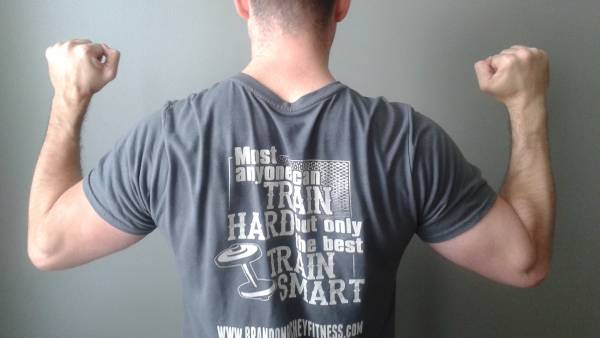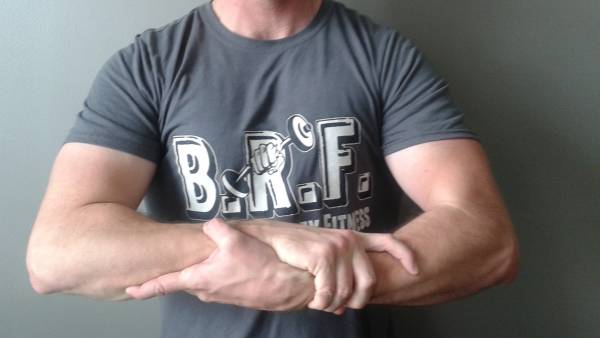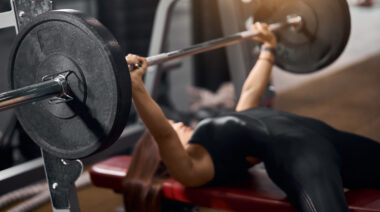Here’s how you can improve your squat in an unconventional manner with a hard-hitting, but easy-to-apply strategy. This will flat out make you strong, even beyond the walls of the weight room.
Priming is a comprehensive strategy involving a variety of tactics to get us stronger and get our bodies ready for the stress we are about to place on them. Essentially, we are preparing ourselves for the squat before the lift even happens. With the priming strategy, we can do this almost anywhere and at any time.
Isometric Grooving Primer
Consistent neural activation is the key to preparing the body for physical battle. It’s like turning the engine on in a racecar, putting it in gear, and revving up the RPMs. When you reach this point, everything is ready to perform.
Call it frequency, frequent practice, greasing the groove, or the isometric grooving primer (IGP). IGP involves practicing the isometrics of a lift throughout the day to prime the body for physical activity.
In the back squat, the name of the game is force production. Without increasing force production, it’s going to be hard to get your ass out of the hole at the base of that squat. So if we want to increase our squat, we certainly need to practice squatting heavy, but we also need to ready the body in other areas.
“Priming is a comprehensive strategy involving a variety of tactics to get us stronger and get our bodies ready for the stress we are about to place on them.”
An example is making sure we can fire the traps and lats as we pull the bar down into the descent of the movement. As we descend, the muscles of the superior kinetic chain (muscles above the waistline) become more tense because we’re pulling the bar down on us as we lower our bodies. Conversely, our inferior chain (muscles below the waistline) is somewhat relaxed compared to the upper body as we sit our asses back into the hinge. As we ascend out of the squat these scenarios swap.
To descend properly into the squat position, we need to make sure our traps and lats are strong. This is what we can practice grooving with isometric tension throughout the day.

Imagine firing the top shoulder muscles to cushion the weight of the bar.
At this point, squeeze your traps and lats as you would do when in the squat rack. Imagine firing the top shoulder muscles to cushion the weight of the bar.
Dynamic Tension Primer
Self-applied resistance can also be varied so that it’s not just isometric or static. In other words, we can apply an element of movement with self-resistance by pitting one muscle against another.
Popularized by Charles Atlas in the 1920s, this dynamic tension method is a way to create a movement form of self resistance which is slightly different than when compared to the static isometric resistance.
We can use dynamic tension to fire the lats for improving the squat:
- Place your arms at about a ninety-degree angle in front of you
- Firmly grab each of your wrists with your hands.
- From here, use your left arm to pull your right arm across your body.
- Resist with your left, but still allow enough give for the right arm to be pulled across.
- Fire your lats on each side during both the pulling and resistance phases of this exercise, while also bracing the hell out of your midsection.

Use this tecnique to create dynamic tension and fire the lats.
Groove this technique by practicing three to five pulls in each direction throughout the day. When coupling this with getting under the bar, you’ll stand to hit your percentages better due to the fact your body’s nervous system has been in a constant state of activation.
Stabilization Primers
Being functional does not mean you have look goofy standing on a Bosu ball. In order to be functional, we simply need to eliminate dysfunction. This is done by mobilizing joints that need to be mobile, while stabilizing joints that should be stable.
Mobile joints such as the hips and ankles must be able to move throughout a full range of motion, but they should also be able to stabilize during movement. Especially if that movement involves us fighting against a significant external load, e.g. being under a squat bar.
Unilateral (single limb) training is an effective supplemental tool to foster greater joint stability. When in the weight room, during your more conventional training, it’s beneficial to inject some lunges, step ups, and single-leg deadlifts into your program. This will certainly improve your strength for the next squat day. For the past twelve years, I’ve experienced firsthand the positive results of unilateral training.
“It may seem easy enough, but doing this for a single hold on each leg a couple times a day and several days a week will significantly improve your stability and it will show during your time underneath the squat bar.”
Strength gains can be acquired from unilateral training by forcing us to manipulate and and master weight distribution during the movements. Additionally, if you find yourself short on equipment and time, you can take advantage of unilateral exercises to get in your training while also addressing some of those stability (or instability) needs.
As far as priming, one way to integrate unilateral stability is to regularly practice standing on one leg while reaching down to touch your toe. Essentially, you’re performing a single-leg deadlift by bending at the hip and knee of the grounded leg as you lower your body. If you’re standing on your left leg, then reach down to touch your toe with your right hand. Once you have lowered yourself down, hold and stabilize your body in the lowered position for four to six seconds.
It may seem easy enough, but doing this for a single hold on each leg a couple times a day and several days a week will significantly improve your stability and it will show during your time underneath the squat bar.
Mobility Primers
Many imbalances are brought on by adopting poor programming habits. People tend to address their training “wants” instead of their training “needs.”
This can be seen with the traditional desk jockey who spends all day slouched in front of a computer screen. His posture is compromised due to tight chest muscles causing a forward rounding of the shoulders. There is a serious lack of shoulder mobility and any core stability since he has trained his body for the act of sitting.
One day he decides to return to lifting and walks right into the gym and starts hammering out sets of bench presses and then follows it up with some sit ups. Training “wants” are taking precedence over his training “needs.”
“The bottom line is that in order for the lifter to execute the back squat, he or she must have enough mobility in the shoulder to abduct and externally rotate at the glenohumeral joint.”
This trainee is potentially worsening his physical situation by reinforcing negative patterns he already gets too much of while sitting at work. As a result, the trainee starts to complain of shoulder, neck, and low back pain.
Aside from using corrective programming such as some band pull aparts, pull ups, and some good old fashioned deadlifts to fix these movement restrictions, I’m also a big believer in manual therapy to restore function in the shoulders and the hips.
A great deal of the tightness we experience may be due to varying levels of fascia restriction. Stretching alone isn’t going to cut it, so grinding it out with a massage (or with a lacrosse ball) will free up those bound trigger points, in turn releasing the contracted fibers associated with the restricted area.
The bottom line is that in order for the lifter to execute the back squat, he or she must have enough mobility in the shoulder to abduct and externally rotate at the glenohumeral joint. By using the lacrosse ball to roll out the pectorals and the deltoids, and to alleviate stiffness in the neck, the lifter is going to be more able to get the barbell into a stable position on the shoulders so that he or she can safely execute the back squat.
If the lifter is unable to comfortably do this, then the lifter will generally experience shoulder pain. Until this is fixed there aren’t going to be any squat PRs set anytime soon if this is the case.
The Takeaway
Priming consists of small strategies to prep the body for performance. The best bodybuilders, the strongest lifters, and the most dominant athletes I’ve seen are experts at consistently doing the little things. The athlete who is able to consistently and effectively prime the body while pursuing an intelligently designed strength program wins.
More Like This:
- Squat Therapy: 4 Drills for a Better Squat
- Science Compares the Back Squat to the Overhead Squat
- Pro Advice for a Better Overhead Squat
- What’s New on Pulse Beat Fit Today
Photo 1 courtesy of CrossFit Impulse.
Photos 2 and 3 courtesy of Brandon Richey.






